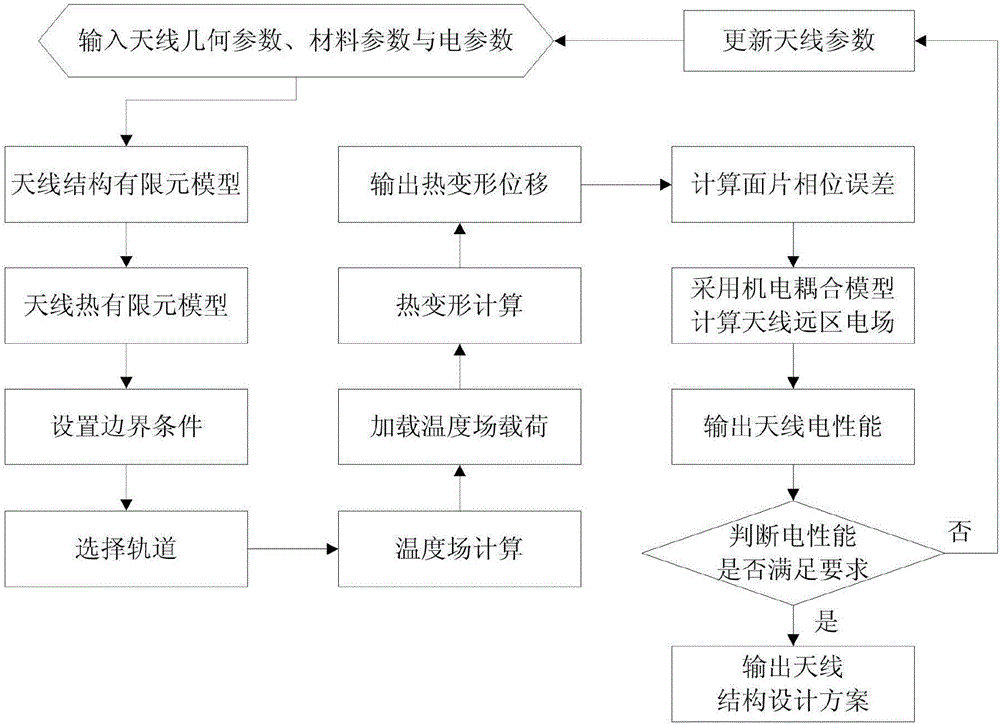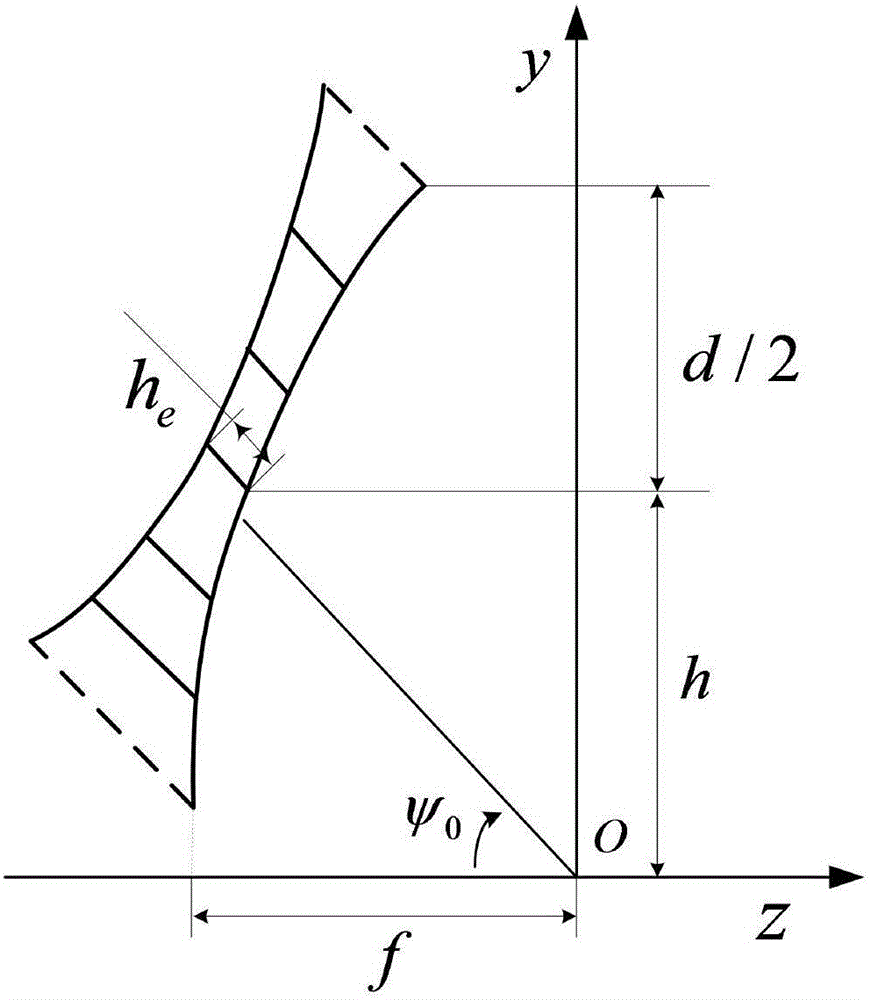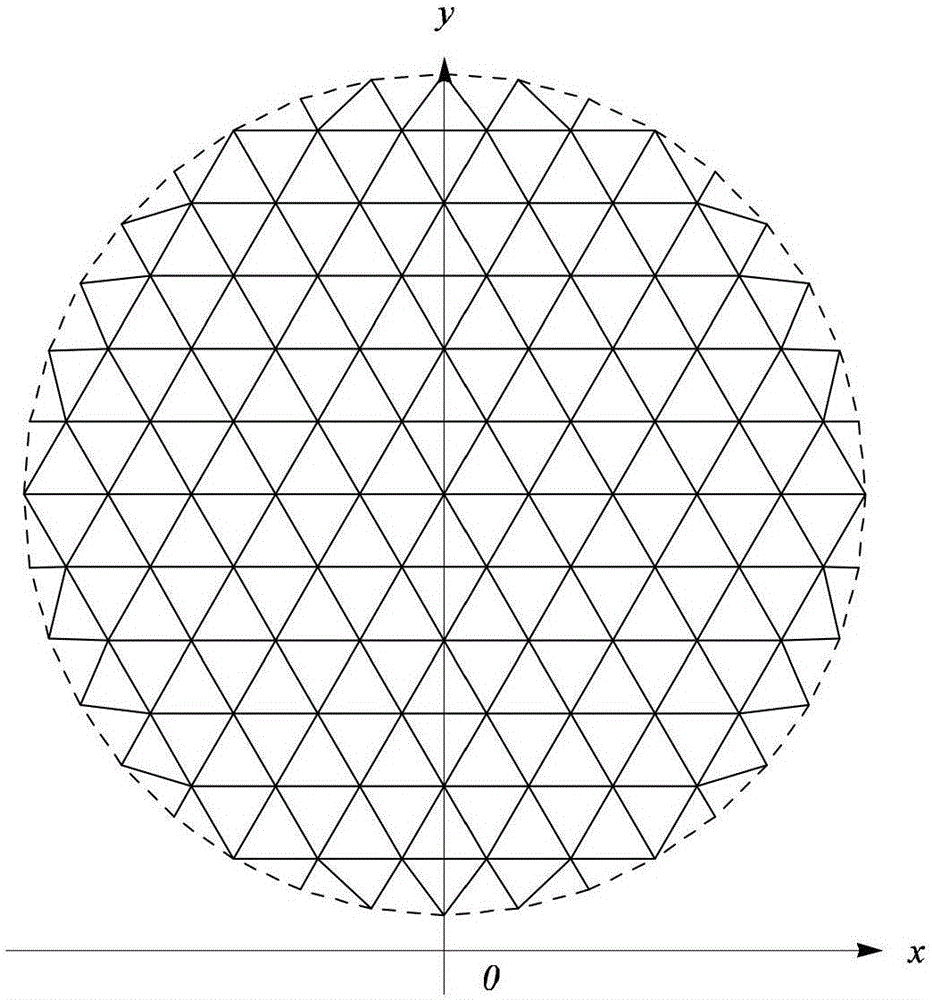Space mesh reflector antenna temperature load analysis method based on electromechanical coupling model
An electromechanical coupling and analysis method technology, applied in the direction of electrical digital data processing, special data processing applications, instruments, etc., can solve the problems of not considering the influence of antenna thermal deformation on electrical performance, and the difficulty of predicting the change of antenna electrical performance, etc., to achieve The effect of taking into account the antenna structure performance and electrical performance requirements
- Summary
- Abstract
- Description
- Claims
- Application Information
AI Technical Summary
Problems solved by technology
Method used
Image
Examples
Embodiment Construction
[0050] Attached below figure 1 , the specific embodiment of the present invention is described in further detail:
[0051] The invention provides a method for analyzing the temperature load of a space mesh reflector antenna based on an electromechanical coupling model, comprising the following steps:
[0052] Step 1, input the parameters provided by the user including the geometric parameters, material parameters and electrical parameters of the space mesh reflector antenna, where the geometric parameters include aperture, focal length, offset distance, minimum distance between the front and rear mesh surfaces, and the material parameters include Material density, cross-sectional area, Young's modulus of elasticity, Poisson's ratio of cable structure, truss structure and wire mesh structure, as well as specific heat capacity, thermal conductivity coefficient, thermal expansion coefficient, surface emissivity, absorptivity, electrical parameters including operating wavelength, ...
PUM
 Login to View More
Login to View More Abstract
Description
Claims
Application Information
 Login to View More
Login to View More - R&D
- Intellectual Property
- Life Sciences
- Materials
- Tech Scout
- Unparalleled Data Quality
- Higher Quality Content
- 60% Fewer Hallucinations
Browse by: Latest US Patents, China's latest patents, Technical Efficacy Thesaurus, Application Domain, Technology Topic, Popular Technical Reports.
© 2025 PatSnap. All rights reserved.Legal|Privacy policy|Modern Slavery Act Transparency Statement|Sitemap|About US| Contact US: help@patsnap.com



